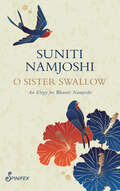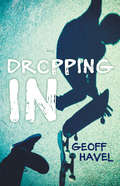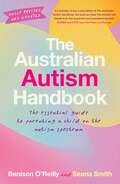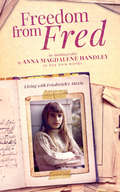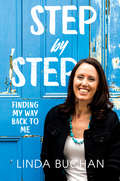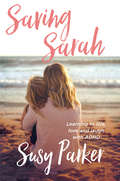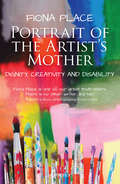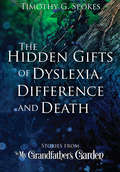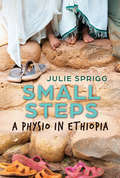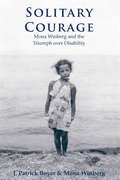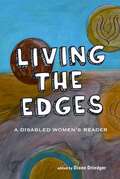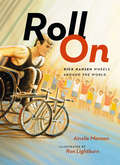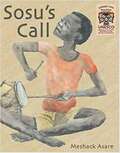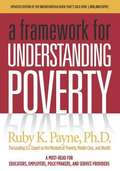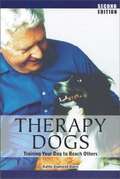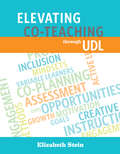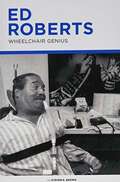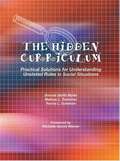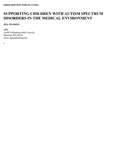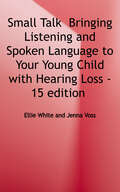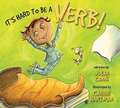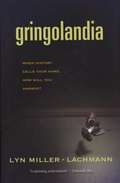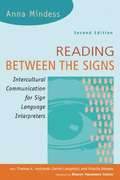- Table View
- List View
O Sister Swallow: An Elegy for Bharati Namjoshi
by Suniti NamjoshiShouldn' t there be a bridge from the known to the unknown?In this exquisite elegy, Suniti Namjoshi reflects on the life of her sister Bharati, their overlapping yet disparate lives, their nearness and distance, and what it means to belong and to be valued. The two sisters love one another and they love birds; but they live on different continents and think in different languages. Is this what sisterhood is really about – to acknowledge difference and still to understand and to care?This richly textured book with its tender and elegant language is full of both joy and grief. It is a generous yet poignant invitation from the author to us to contemplate our own experience.If the casual, implacable insolence of death could be answered by building a monument or by writing an elegy, perhaps it would do till language crumbled and the edifice fell.
Dropping In
by Geoff HavelAn action-packed middle-grade story that explores friendship, bullying, and living with a disability Ian and Warren, better known as Sticks and Ranga, are best friends. They live on the same street, go to the same school and love the same things, like skateboarding and PlayStation. When new kid James arrives in class in his wheelchair, Sticks isn't sure they can be friends. But Sticks quickly discovers they have a lot in common. Cerebral palsy stops James from doing some things but it hasn't dulled his sense of humor—and he's pretty brainy, too. Soon James becomes an inseparable part of the Sticks, Ranga, and James show.
The Australian Autism Handbook: The essential guide for parents of children with autism
by Seana Smith Benison O'ReillyA fully updated edition of the widely praised and most trusted Australian guide on how to raise a child with autism spectrum disorder.An essential, comprehensive and INCLUSIVE guide for parents and carers of kids with autism. Advice from leading world experts delivers the information you can TRUST.Offers SUPPORT AND GUIDANCE on early signs of ASD; diagnosis; medical theories; schooling and growing up; intervention programs; treatments; dealing with emotions (parents and child); what not to say to your child and how to help them.SHARES the lived experience of fellow parents who are raising kids with autism and we hear from adults who have autism to hear their perspective. So much has changed since 2008: the language of autism, diagnoses, the understanding of disability, society, culture and agency. This new edition sparkles with new ENERGY and new horizons.
Freedom from Fred: Living with Friedreich's Ataxia
by Anna Magdalene HandleyOn the night of a debutante ball, events set in motion an emotive and intimate portrayal of the revelation of a life changing condition. Anna Magdalene plunges deep into a personal maelstrom that is both tender and hard-hitting as it explores the hidden recesses of social understanding of her condition, Friedreich's Ataxia. On the quest for healing, Anna embarks on brave and sometimes strange journeys of enlightenment to free herself from the bonds of her condition. In one of these adventures she stumbles on an unexpected answer that brings a true light in the most disarming way, changing her whole view of what freedom is. Simultaneously, she discovers a mutual hope to join life again and a way to live with her condition, 'Fred', while she must. (Blurb by Anna's Carers, Pierre and Lee Figueira)
Step By Step: Finding My Way Back to Me
by Linda BuchanMy name is Linda Buchan and when I was 18 years old I died... On a winter's day, Saturday June 27, 1998 my young life ended and my new life began. A life that was to be so completely different to the one that I had envisaged, the one that I had expected... ... In the days, weeks, months and years that followed I was often stricken with pain, sadness, despair, distress and heartbreak but I never for one moment thought about giving up. I didn't know where it came from but I always had hope, I always knew that I would not only survive but that my life would get better. In Linda Buchan's raw and powerful memoir she shares her journey from the terrible night when the life and future she thought lay ahead of her was shattered. From that moment she began a new life, firstly fighting just to survive, then forging her way with incredible courage and determination to live a fulfilling and purposeful life on her own terms. She is living proof of her own mantra It's not what happens to you. It is how you deal with it. Linda's way of dealing with what happened to her has been to combine acceptance and contentment, finely mixed with determination and an undeniable drive and passion for life. Her athletic background underpinned her physical determination and mental willpower, which helped her recovery immensely. To this day she draws on all of these attributes. Linda is the embodiment of her mantra "it's not what happens to you. It's how you deal with it." She is an inspiration to us all. - Janine Shepherd AM
Saving Sarah: Learning to live, love and laugh with ADHD
by Susy ParkerSusy Parker's daughter, Sarah, was diagnosed with ADHD and Anxiety when she was just six years old. Months later she was also diagnosed with Oppositional Defiance Disorder (ODD). Saving Sarah charts her family's rollercoaster journey from diagnosis, through the consulting rooms of various specialists, their confusion over the conflicting medical advice they received and Susy's eventual decision to quit the medications and find her own way to save her daughter and their family. I am sharing Sarah's story to let other parents know that there can be another way and that miracles do happen, because a miracle happened to us. ADHD, it's just a different way to be. - Susy I think that the Doctors don't know what they are doing. Children are really scared, and the Doctors don't know what the children are actually capable of. When they know, they will see that they are beautiful children, and they don't need medication. - Sarah * Names have been changed to protect identity
Portrait of the Artist's Mother: Dignity, Creativity and Disability
by Fiona PlaceI am seen by many as a danger. As having failed to understand the new rules, the new paradigm of successful motherhood. In this eye-opening book, Fiona Place describes what it is like to be the mother of a son with Down syndrome. She takes us from her pregnancy—and the urging of medical professionals to undergo screening—to the multiple challenges she faced as she did her utmost to ensure her son had every opportunity to grow and learn. We share her distress at the treatment of her family by many so-called experts; we share her appreciation for those people who reached out to Fraser and showed him care and compassion; we share her frustration at the obstacles she faces as a mother who just wants the best for her son. We also share her joy as we witness Fraser become a successful award-winning artist. This is a story of courage, love, and commitment to the idea that all people, including those who are 'less than perfect', have a right to be welcomed into this increasingly imperfect world.
The Hidden Gifts of Dyslexia, Difference and Death: Stories from - In My Grandfather's Garden
by Timothy G SpokesCan your difficulties become stepping-stones to a successful future? Can a young boy overcome a serious reading difficulty and achieve beyond all expectations?For a few gruelling years in a Catholic boys’ school, where the Brothers carry a lash under their gowns ready to strike any boy who offends their strict code, Tim struggles with maths and English, and keeps mostly to himself. But he has an observant inner life, with hours spent wandering in the cemetery his grandfather tends, learning about death the leveller and the falsity of social class and wealth.Tim has pitch perfect hearing and a voice like an angel, and is marked out by the Principal Brother to become a priest. Not him! Suffering the tragedy of losing the only three close friends he makes over the years, he experiences living with dyslexia as a cross to bear, until he finds the key to a fearless destiny as a paramedic, trauma and emergency nurse, and academic.The gift of dyslexia has taught Tim to say, “Don’t reach for the sky—hell! Go for the stars. You really can do anything you want.” Wisdom, he says, is found in the strangest places.Among these pages you will experience what Tim learnt within his grandfather’s garden, a strange place to find wisdom—among the head stones and monuments, and where, he says, you can find yesterday’s people.
Small Steps: A Physio in Ethiopia
by Julie SpriggThis heartfelt memoir and travel story is about an idealistic young womanforced to confront the limitations of how much difference she can make in acountry rich in culture but stark in its deprivations. Julie Sprigg spent threeyears in Ethiopia, volunteering at a convent clinic and then teaching the firstphysiotherapy cohort to ever graduate from Gondar University. In Ethiopiashe falls in love, and learns as much about herself as she does about thiscomplex, magnificent country and its people.
Solitary Courage: Mona Winberg and the Triumph over Disability
by J. Patrick Boyer Mona WinbergSolitary Courage is the story of a mother’s tough-love determination, her severely disabled daughter’s astonishing triumphs, and a documentary record of the political battles, organizational conflicts, and human struggles that citizens with disabilities face and fight every day of their lives. Mona Winberg became a pioneer of independent living, and emerged a leading advocate for citizens with mental and physical disabilities. Her courageous causes erupted from her deep reservoir of compassion and concern. Her unflinching challenges to the status quo expressed both optimism and realism about life and society. Her life is testament to the power of Solitary Courage. Between 1986 and 1999 she was the only newspaper columnist in North America regularly writing about disability issues. Through her award-winning column "Disabled Today" in Toronto’s Sunday Sun, Mona Winberg painstakingly built up a body of work of more than 600 articles chronicling front-line battles for equality. She was a realist, a wise person with a no-nonsense approach, kindly, but clear-eyed. Solitary Courage begins with the story of Mona Winberg’s life, followed by a representative selection of 156 of her columns organized into 20 thematic chapters, the best of Mona in her own words. The last part of the book reflects upon Mona Winberg’s legacy of lessons that still connect to programs and policies touching the lives of Canadians with disabilities today. The subjects are wide-ranging and engaging because Mona used personal examples of individuals with disabilities and news-making issues raised by their plight. She also reported on the street-level outcomes of government policies. This variety and approach to disability issues provides real education and genuine human interest, whatever a reader’s background or experience.
Living the Edges: A Disabled Women's Reader (Inanna Reader Ser.)
by Diane DreidgerThis anthology was compiled as a means for Canadian women with disabilities to share experiences with other disabled women and with the public at large. The collection includes poetry, artwork, personal essays, and academic studies that focus on the marginalization of women with disabilities. Selections embrace the broadest view of disability, including women with physical, sensory, mental-health, and intellectual disabilities and women dealing with chronic illness. Sections include "Who We Are on the Edges," "Naming the Edges," "Violence on the Edges," and "With Us on the Edges."
Roll On
by Ainslie Manson Ron LightburnAs Rick Hansen wheels around the globe on his incredible Man in Motion World Tour, the children he meets are encouraged to dream their own dreams and work to make them come true. Readers also discover little-known facts about the great journey. They learn that Rick wheeled the equivalent of three marathons a day and went through 94 pairs of gloves. And they learn about the gift of a song that Rick and his team sang or hummed mile after mile. The lively text and enchanting illustrations combine to bring to life Rick's amazing feat and the impact it has had on children everywhere. Roll On is an inspirational story for any child who has had to overcome a disability, has a friend or sibling who lives with a disability, or who has big dreams for life.
Sosu's Call
by Meshack AsareWinner of the 1999 UNESCO prize and IBBY's Outstanding Books for Young People with Disabilities award, Sosu's Call by Ghanaian author/illustrator Meshack Asare is a story of heroism and resolve. <p><p> Sosu is all alone in his family's compound when disaster strikes. The waters are rising, and most of the people of the village are in the fields. The only ones left are the very old and the very young. And Sosu, who cannot walk. Somehow he manages to make his way through the rising waters up the hill to the drum shed, where he sounds the alarm and saves the village. <p><p> A book about differences, about acceptance, about what it means to be "normal." A book about the people and the lives that take place on the other side of the world, and in our own backyard.
A Framework for Understanding Poverty (4th Revised Edition)
by Ruby K. PayneThis book presents the issues central to teaching students from poverty, then takes a pivotal next step by offering proven tools educators can use immediately to improve the quality of instruction in their classrooms.
Therapy Dogs: Training Your Dog to Help Others
by Kathy Diamond DavisYou and your dog can become a therapy dog team! Are you looking for a new and meaningful way to work with your dog? Do you want to improve the lives of those who because of illness or disability would benefit from visits with a volunteer canine "therapist"? Then think about becoming a Therapy Dog Team and you will create the kind of magic that enriches lives. Therapy Dogs, Training Your Dog to Reach Others, 2nd Edition gives you all the information you need to select, socialize and train your dog for this work. What better creature than a dog to offer comfort, companionship and even entertainment to people in a wide variety of settings? Don't start an Animal Assisted Activity program at your facility without Therapy Dogs! You will have the latest information on how teams train, prevent problems, deal with liability issues as well as health and safety concerns. Therapy Dogs will help you understand what to look for in a program and in volunteers to assure success. "This revised edition of Therapy Dogs fills a niche in dog training literature by offering a basic lesson plan for therapy dog class, a great resource list and an annotated bibliography." Gently McMillen, Delta Pet Partner and Team Evaluator.
Without Hesitation: Speaking to the Silence and the Science of Stuttering
by Gerald A. Maguire Lisa Gordon WitherBack Cover: “What is stuttering? Five million voices can speak to this. A disorder that has defied physicians for centuries, stuttering claims as its own grade-school students and senior citizens, captains of industry and kings of nations, politicians, performers and professional athletes. It causes confusion in families, contempt in the uninformed and anguish in the approximately five million individuals in the United States who find it impossible to speak without effort. There are no cures but there are solutions. And there is hope because of significant advancements in pharmacotherapy--the clinical treatment of stuttering with medication. Without Hesitation: Speaking to the Silence and the Science of Stuttering explores the history, the heartache and the hope for this medical condition from an insider's perspective: a physician who has stuttered since childhood and knows how it feels to struggle with words and to express himself with ease.”
Technology for All Assistive Technology in the Classroom
by Overbrook School for the BlindAn easy-to-read, field tested resource for all schools and colleges that need assistive technology in the classroom.
Elevating Co-Teaching through UDL
by Elizabeth SteinCo-teaching--the practice of having special education and regular education teachers work together in inclusive classrooms--is one way to ensure that all students have equal access to challenging academic content. But the practice is a challenging one, requiring thoughtful planning and execution by cooperative classroom professionals. Universal Design for Learning (UDL), a framework for designing inclusive learning environments, offers co-teachers structure and guidance in pursuing their goal to create successful learning environments for all students. In this book, veteran co-teacher and UDL expert Elizabeth Stein shows how to apply the UDL principles and guidelines to the practice of co-teaching. How does UDL inform the lesson-planning process? What does UDL look like in the classroom? What role does formative assessment play? How do you get buy-in for the UDL approach from administrators, parents, and students themselves? These and other questions are answered in this must-have book for anyone interested in co-teaching.
Ed Roberts: Wheelchair Genius
by Steven E. BrownMiddle grade biography of late 20th century American disability rights pioneer and activist, Ed Roberts.
The Hidden Curriculum: Practical Solutions for Understanding Unstated Rules in Social Situations
by Brenda Smith Myles Melissa L. Trautman Ronda L. Schelvan Michelle Garcia WinnerThis book offers practical suggestions and advice for how to teach and learn those subtle messages that most people seem to pick up almost automatically but that have to be directly taught to individuals with social-cognitive challenges. Given the serious consequences that can befall a person who violates a social rule, the strategies and detailed lists of curriculum items make The Hidden Curriculum a much-needed resource.
Prescription for Success: Supporting Children With Autism Spectrum Disorders in the Medical Environment
by Jill HudsonBecause of the unique needs of children with ASD, it is important to pay special attention to the details of their experience in the medical environment. Designed to help make the medical experience easier for all involved, this book presents information on ASD, the varying developmental levels, interventions, and assessments that medical staff, parents, educators, and key service providers can use to more effectively interact with and support children with ASD while in the medical setting.
Small Talk: Bringing Listening and Spoken Language to Your Young Child with Hearing Loss
by Jenna Voss Ellie WhiteSmall Talk is a resource for families of young children with hearing loss and for professionals guiding families through the early stages of listening and spoken language development. The book contains key information needed to support optimal development presented in an engaging and encouraging way. It's up-to-date, evidence-based and family friendly. Graduate students preparing for careers with children with hearing loss will benefit from the well-organized content and developmentally appropriate focus.
It's Hard To Be A Verb!
by Julia Cook<p>Louis is a verb <p>He has a lot of trouble focusing and he is always doing something, but the problem is usually it's the wrong something. <p>It's hard to be a verb <p>My knees start itching, my toes start twitching, my skin gets jumpy, others get grumpy. <P><P> When it comes to sitting still it's just not my deal. <p>Haven't you heard. . . <p> I am a verb <p>His mom teaches him how to focus by showing him a few hands on ideas that anyone can try. <P>A must have book for all who struggle with paying attention
Gringolandia
by Lyn Miller-LachmannDaniel's papá, Marcelo, used to play soccer, dance the cueca, and drive his kids to school in a beat-up green taxi-- all while publishing an underground newspaper that exposed Chile's military regime. After papá's arrest in 1980, Daniel's family fled to the United States. Now Daniel has a new life, playing guitar in a rock band and dating Courtney, a minister's daughter. He hopes to become a US citizen as soon as he turns eighteen. When Daniel's father is released and rejoins his family, they see what five years of prison and torture have done to him. Marcelo is partially paralyzed, haunted by nightmares, and bitter about being exiled to "Gringolandia". Daniel worries that Courtney's scheme to start a bilingual human rights newspaper will rake up papá's past and drive him further into alcohol abuse and self-destruction. Daniel dreams of a real father-son relationship, but he may have to give up everything simply to save his papá's life. This powerful coming-of-age story portrays an immigrant teen's struggle to reach his tortured father and find his place in the world.
Reading Between The Signs: Intercultural Communication for Sign Language Interpreters
by Anna Mindess Thomas K. Holcomb Daniel Langholtz Priscilla Moyers Sharon Neumann SolowIn Reading Between the Signs: Intercultural Communication for Sign Language Interpreters, Anna Mindess provides a new perspective on a unique culture that is not widely understood-American Deaf culture. With the collaboration of three distinguished deaf consultants, Mindess explores the implications of cultural differences at the intersection of the deaf and hearing worlds. The book takes a practical approach with many useful suggestions for the sign language interpreter. Mindess provides several helpful dialogues between hearing and deaf Americans in a variety of situations to illustrate the problems that can arise as a result of cultural differences. The compounded difficulty of communicating with a deaf person from another country is addressed as well, with suggestions for ameliorating possible areas of misunderstanding. It also provides helpful information about advances in technology and the multicultural communities within the Deaf world. Reading Between the Signs is an invaluable tool for those interested in training as a sign language interpreter, but further, for anyone wishing to understand American Deaf culture. . A dazzling application of the tools of intercultural communication to illuminating Deaf and hearing cultures and their differences. . This is a book for everyone interested in Deaf culture. -Harlan Lane, author of When the Mind Hears and The Mask of Benevolence Adds a necessary dimension to understanding what sign language interpretation really entails-not the exchange of words for signs and vice versa but the translation of one view of life and all its meanings into another equally valid yet different view -William C. Stokoe, Former Professor Emeritus, Gallaudet University BRAVO The book is outstanding - well written, informative, and desperately needed in our field . -Jan Humphrey, Ed. D. Certified Interpreter, Interpreter Educator and Author of So You Want to Be an Interpreter?A must-read An enlightening book. a defining document in the literature of Deaf culture. -Eileen Forestal, Professor, ASL Studies and Interpreting Training, Union County College Contents Foreword by Sharon Neumann So low Preface Acknowledgments Part One: Background 1 Introduction 2 The Study of Culture 3 Selected Topics in Intercultural Communication 4 Do Americans Really Have a Culture? 5 American Deaf Culture 6 Multicultural Deaf Culture 7 Culture, Change, and Technology Part Two: Practical Applications 8 The Impact of Cultural Differences on Interpreting Situations 9 Multicultural Interpreting Challenges 10 The Interpreter's Role and Responsibilities 11 Techniques for Cultural Adjustments12 Interpreting in a Virtual World 13 Cultural Sensitivity Shouldn't End at Five O'Clock Afterword by Dr. Thomas K. Holcomb Bibliography About the Author and Contributors Index.
